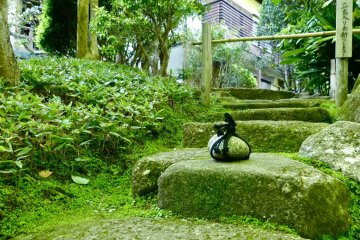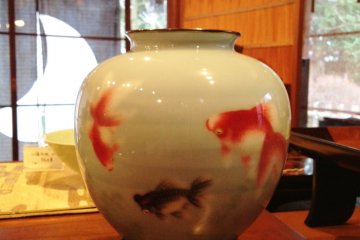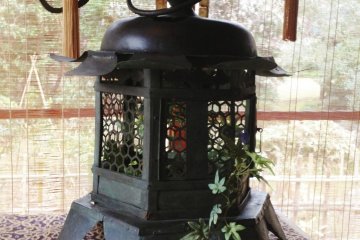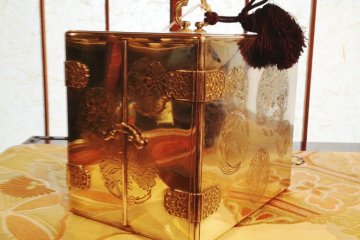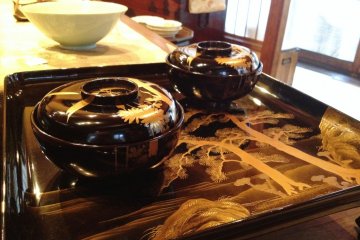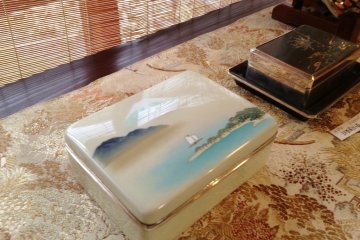As a longtime resident of Kamakura, I would like to introduce to you one of my favorite antique shops. I love buying and browsing for antiques, and Kamakura Ryotan is a shop I go back to again and again.
Lovely Early Showa Period Building
Stepping into the garden through its wooden entrance gate, you come face-to-face with an old private home of the early Showa period (around 1932). In recent days, it is a very rare treat to find and be able to enter such a beautiful old private home such as the one Kamakura Ryotan is housed in. The house contains traditional Japanese style wooden passageways (Engawa), an alcove (Tokonoma), and Ranma (a wooden decorative panel with openwork carvings). Beautiful!
In this shop, I enjoy meeting Japanese antique art in a quiet and solemn atmosphere.A small Japanese style garden surrounds the home. In the garden, you can see lovely plum blossoms (ume) in early spring, weeping willow cherry trees (shidare-zakura) in April, and iris and magnolia in early summer. The pretty song of the bush warbler (uguisu) lightens the mountain air from spring to autumn, so the atmosphere is always delightful and refreshing, no matter what season I visit!
High quality Japanese antique items
Although there are many antique shops located in Kamakura, I have found that Kamakura Ryotan is of exceptionally high quality.
They handle lacquer, cloisonné, makie, porcelain (Imari, Hirado or Nabeshima), Japanese style furniture and metal works from the Meiji period, bamboo baskets, incense burners, and so on. And I think that their Wajima lacquer ware prices are very reasonable, much more so than if I go to Wajima in Ishikawa prefecture itself!Wajima lacquer ware is known for its wonderful gold makiedesign and detail.I have also found exquisite pieces of Owari cloisonné by masters Hayashi Kodenji or Hayashi Tanigoro’s at Kamakura Ryotan.
Most of the cloisonné, furniture, metal works, and porcelain here dates from the Meiji period. Many fine pieces of Japanese fine art were produced in Meiji.As Japan’s long period of isolation ended, Japanese handicrafts began to be exported overseas.
Even if you are not interested in buying any of the antiques here, just coming in and browsing, and seeing such wonderful Japanese fine arts, is worth a visit! I recommend that you take your time and enjoy the house, the garden and the antiques at a nice leisurely pace!
Nikaido is a beautiful place.
Another reason I love to come here is that in the neighborhood (this area of Kamakura is called Nikaido), there are many places of natural beauty and historic interest, such as Kamakura-gu Shrine, Zuisen-ji Temple, the grave of Minamoto-no-Yoritomoand Kakuon-ji Temple with its beautiful Japanese style garden.
Enjoy!





